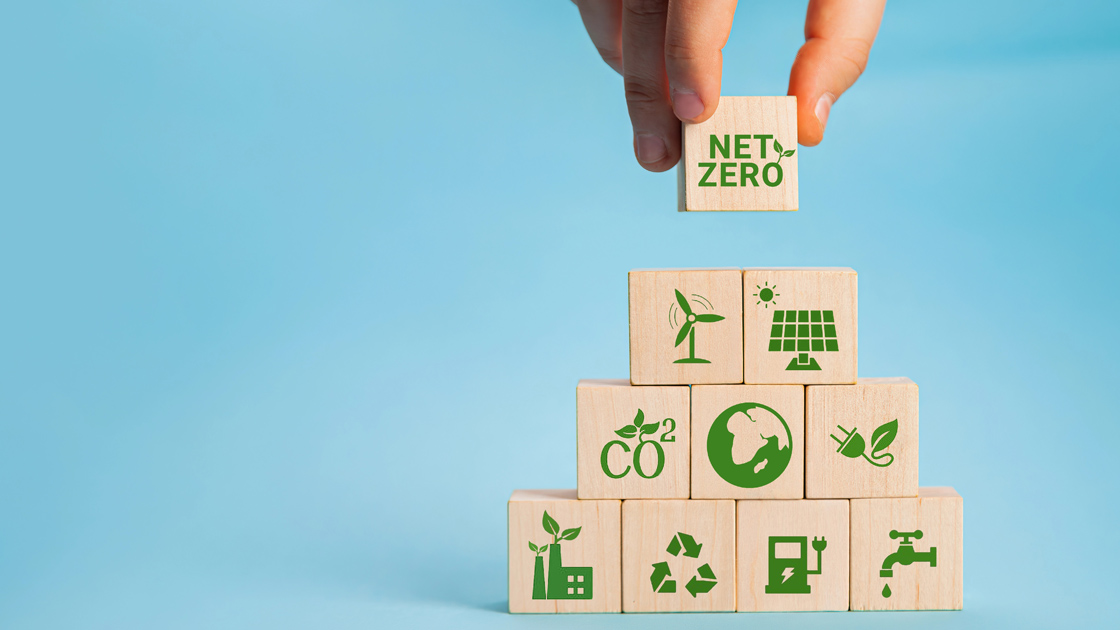As the world races to decarbonize, a new report from the global research firm Wood Mackenzie delivers a sobering message: the goal of reaching net-zero emissions by 2050 is slipping out of reach. Surging power demand, driven by artificial intelligence, electrification, and industrial recovery, combined with geopolitical instability, is pushing global warming toward 2.6°C by the end of the century.
The report, Energy Transition Outlook 2025-2026, outlines four potential futures for the global energy system. Its “base case” sees emissions peaking only by 2028 and falling too slowly thereafter to avoid breaching critical climate thresholds. To limit warming to 2°C, annual investment in clean energy would need to rise by 30% to around USD 4.3 trillion, or roughly 3.35% of global GDP within the next decade, a steep climb from the 2.5% seen today.
Europe still the strongest climate advocate
While no major economy is on track to meet its 2030 emissions targets, Europe stands out as the region most committed to the net-zero agenda. “Europe maintains the strongest net-zero ambitions, viewing clean technologies as essential for both economic and energy security,” said Prakash Sharma, vice president and head of scenarios at Wood Mackenzie.
Yet even with its leadership role, Europe faces an uphill battle. According to the report, the continent must increase annual clean energy investment by 36%, from USD 455 billion to USD 619 billion, to align with a net-zero trajectory. By comparison, the United States must raise spending by 76%, while China - already accelerating its low-carbon industrial expansion - needs a 29% boost.
The European Green Deal and new investment frameworks such as REPowerEU and the Net-Zero Industry Act have positioned the EU as a global decarbonization pioneer. However, the report warns that implementation speed and capital intensity remain major challenges, especially as high interest rates and industrial competition from the US and China pressure the continent’s energy transition financing.
China takes the lead, the US looks backward
Wood Mackenzie’s analysts describe a shifting balance in global climate leadership. While the United States doubles down on fossil fuel exports - particularly liquefied natural gas - China is “seizing the low-carbon mantle” with dominance in electric vehicles, solar manufacturing, and renewables deployment.
“China, Europe, and the US together will account for 70% of global energy transition capital expenditure by 2040,” the report notes. But China’s state-directed industrial policy and scale of investment in battery, solar, and grid technologies have given it a decisive edge in shaping the world’s next energy economy.
AI, critical minerals, and a strained grid
A central finding of the report is that artificial intelligence is now a major driver of electricity demand. Data centers already consume more energy than the world’s electric vehicles combined — 700 terawatt-hours in 2025, a figure expected to double by 2030. This surge, while powering digital progress, risks destabilizing already stretched power systems and increasing electricity prices.
At the same time, the competition for critical minerals such as lithium, nickel, cobalt, and rare earth elements is becoming the new frontier of geopolitical rivalry. “Resource nationalism is shifting from fossil fuels to critical minerals,” Sharma warned. Europe, heavily dependent on imports of these materials, is racing to secure alternative supply chains and build strategic reserves — a move seen in the EU’s Critical Raw Materials Act passed earlier this year.
The cost of delay
The report concludes with a stark message for policymakers ahead of COP30: without a surge in coordinated investment and technology deployment, the world will lock in higher warming and higher adaptation costs.
“Delaying action may appear cheaper in the short term,” Sharma said, “but it will be far more expensive later when we’re forced to adapt to a more volatile climate.”
For Europe, where climate ambition meets economic pragmatism, the challenge is clear: maintain momentum in the face of global headwinds and ensure the continent’s green leadership translates into lasting energy resilience.


Leave a Reply Cancel reply
Top 5 Articles
 Shaping a Generation of Creative and Resilient… September 10, 2025
Shaping a Generation of Creative and Resilient… September 10, 2025  New Page in the History of Budapest Airport October 8, 2025
New Page in the History of Budapest Airport October 8, 2025  For the Export Success of Hungarian Enterprises June 17, 2025
For the Export Success of Hungarian Enterprises June 17, 2025  Representing France in Familiar Territory October 6, 2025
Representing France in Familiar Territory October 6, 2025  EC Clears EUR 10.8 Mn in Support for Hungarian Farmers October 10, 2025
EC Clears EUR 10.8 Mn in Support for Hungarian Farmers October 10, 2025





No comment yet. Be the first!